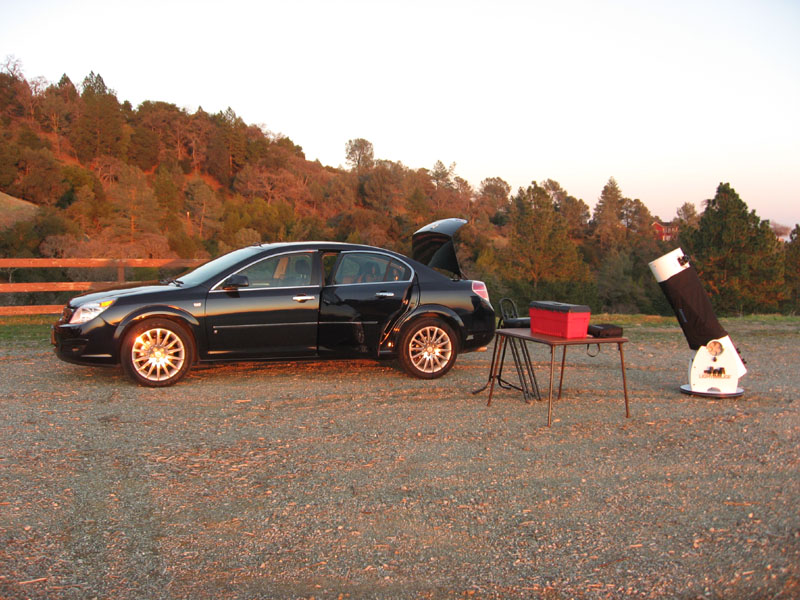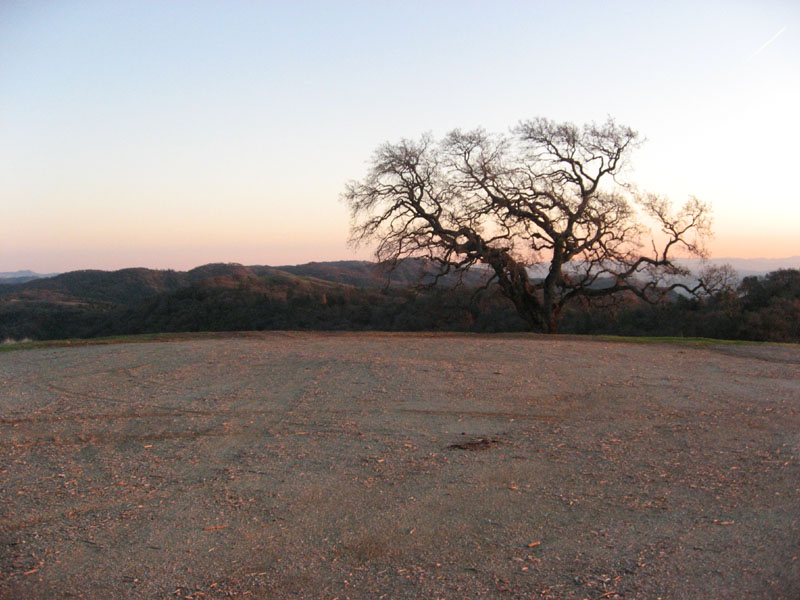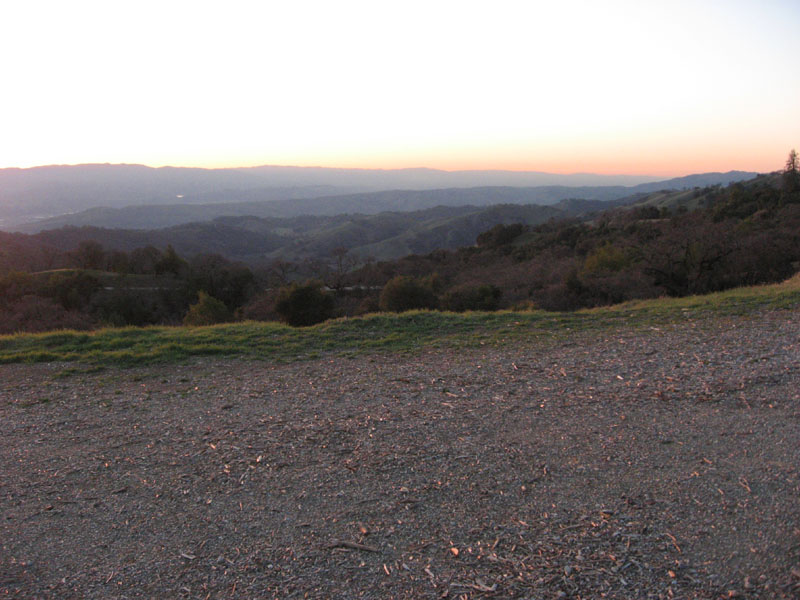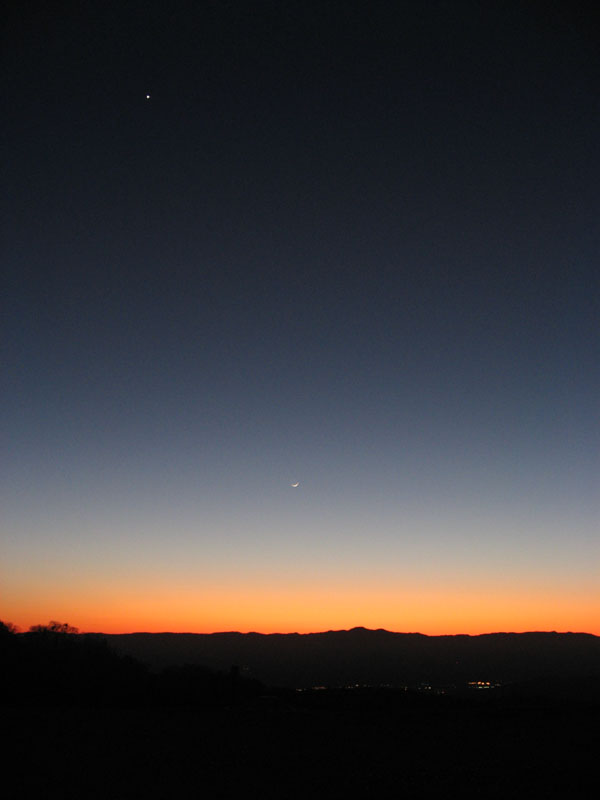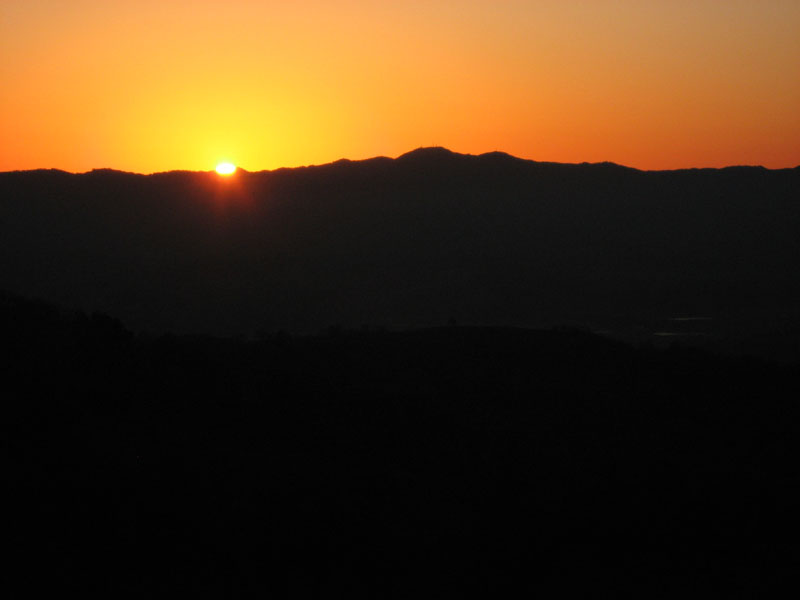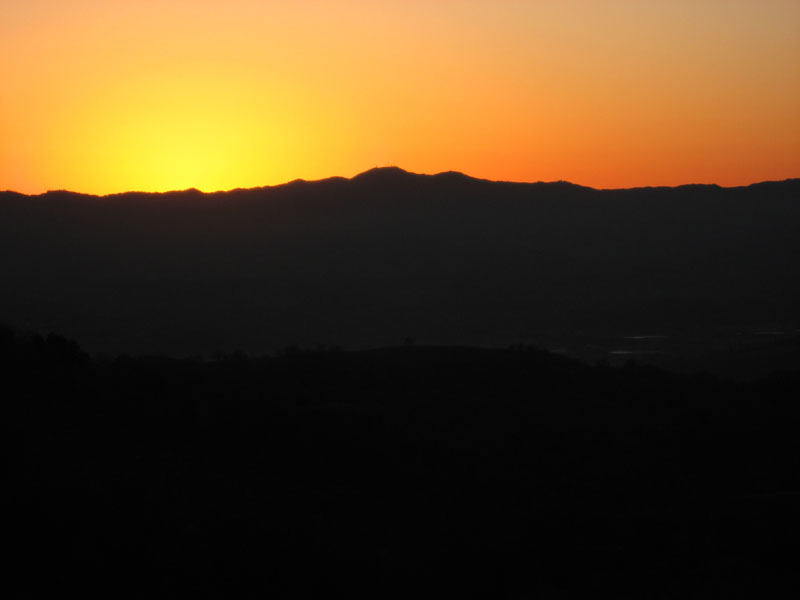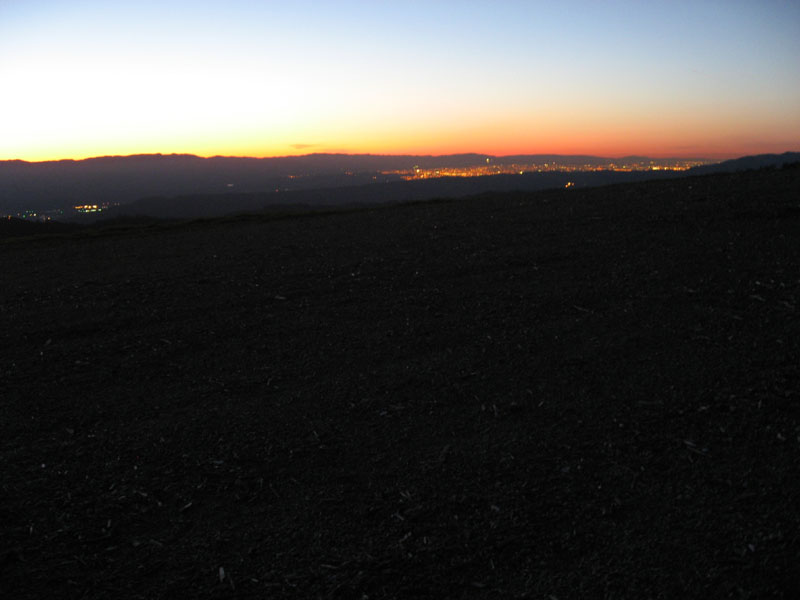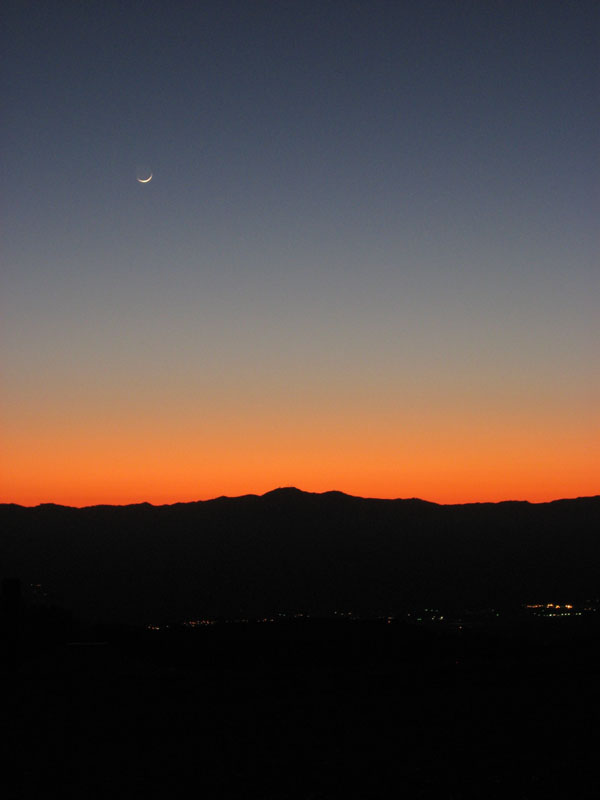I arrived at Dinosaur Point around 4:15pm. I set up in the middle of the parking lot, which ended up being a fine location as I later found myself surrounded by Dave Cooper, Peter Natscher, Rob Enns and Rogelio Bernal Andreo. There was little wind, but there was a fairly thick haze visible that was made even more visible by the setting sun. I knew then that the weather conditions were not going to be ideal.
My goal for that evening was to 1) try out some new equipment (Starbound observing chair, Televue Panoptic 27mm, Televue Nagler 16mm, Orion RedBeam Self-Powered LED flashlight, ScopeStuff variable counterweight system, Catseye collimation tools, chemical foot warmers) and 2) start my Herschel 400 project.
Let’s start with the equipment. I found the Catseye collimation tools (cheshire and auto-collimator) to be very nice once Peter Natscher explained to me how to use them. I also tried Rob Enns’ laser collimator, which gave me different results. This is probably because my secondary is not perfectly aligned underneath the focuser. I will have to tune this alignment with a sight tube at home.
I found the Starbound observing chair to be a great value, very comfortable. The ScopeStuff variable counterweight system was a great help when pointing near the horizon (it renders the altitude brake useless) The Televue Panoptic 27mm worked great, but I was barely able to reach focus with it… The Televue Nagler 16mm was my favorite eyepiece, delivering great views. I also used an old Vixen LV9mm, which made me feel like I was staring through a peep hole… I’ll have to replace it with a Televue Nagler 9mm (the Ethos 8mm seems a bit too expensive) I found the Orion flashlight to be too bright (even on the “Low” setting) so I put some translucent tape in front of it. But then, I discovered that the battery life was not that great, and I had to manually crank it several times after approximately 3 hours of use. I’ll have to see if I can remove a couple of LEDs to lower the brightness and increase the battery life. Finally, the chemical foot warmers worked nicely, but provided heat for only about 3 hours, not the 6 hours advertised…
Early on, Venus, combined with the haze, was a major source of light pollution. Overall, I feel like I will have to re-observe a lot of objects (especially galaxies and nebulae) Star clusters are usually less affected by light pollution and poor transparency.
I used two atlases: The Pocket Sky Atlas and the Sky Atlas 2000.0. I feel like the difference between these two atlases is too small to justify using both of them. Moreover, I prefer the compact format of the Pocket Sky Atlas. Therefore, I’ll have to get the more detailed Uranometria vol. 1 & 2 in addition to the Pocket Sky Atlas, and sell the Sky Atlas 2000.0.
I only have a red-dot finder, and I sometimes wished I had an optical finder too, especially when the object I was seeking was surrounded by several other conspicuous objects. A couple of times, I wasn’t quite sure which object I was looking at. I especially liked Albert Highe’s setup (his red dot finder is attached to a right angle optical finder scope - although I still wonder whether I should get a right angle or a straight view finder scope…)
Besides my prepared observing list, I observed Sirius’ companion through Peter Natscher’s 24″ scope. It was easy at 600x. I then tried with my 12″ scope at 300x and I was able to see it too, though not as distinctly, and only during rare moments of steadier seeing. I also observed a couple of carbon stars including Hind’s crimson star, and before leaving, around 1am, looked at M51 through Rob Enns’ 16″ scope. Although still low on the horizon, the spiral structure was obvious (but the bridge between M51 and its companion galaxy was not detected) Finally, Dave Coopper’s AstroPhysics refractor gave superb views of Saturn.
Now for my observing list. As I am writing this, I noticed that I forgot to log a lot of important details (For example, instead of saying that a cluster is “large”, I should have tried to estimate its size in arc minutes. I also noticed that as the night went on, the logging got worse…) When I re-visit some of these objects, I’ll have to pay more attention to the quality of my logging. Overall, it was a decent night and I was quite happy with my newly acquired equipment. Cheers!
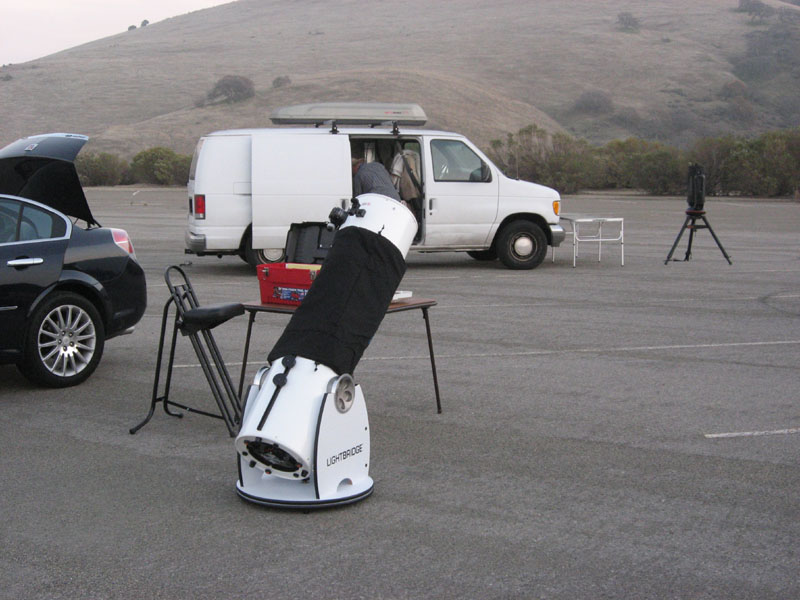
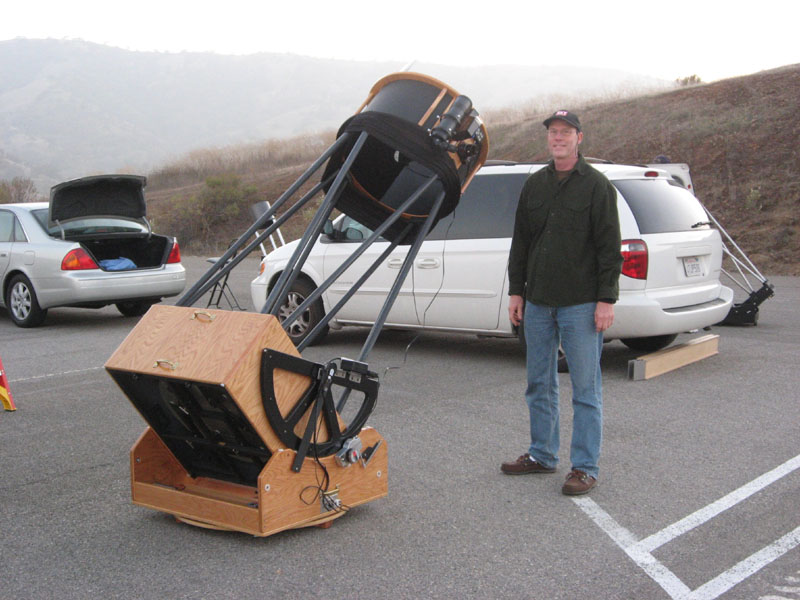
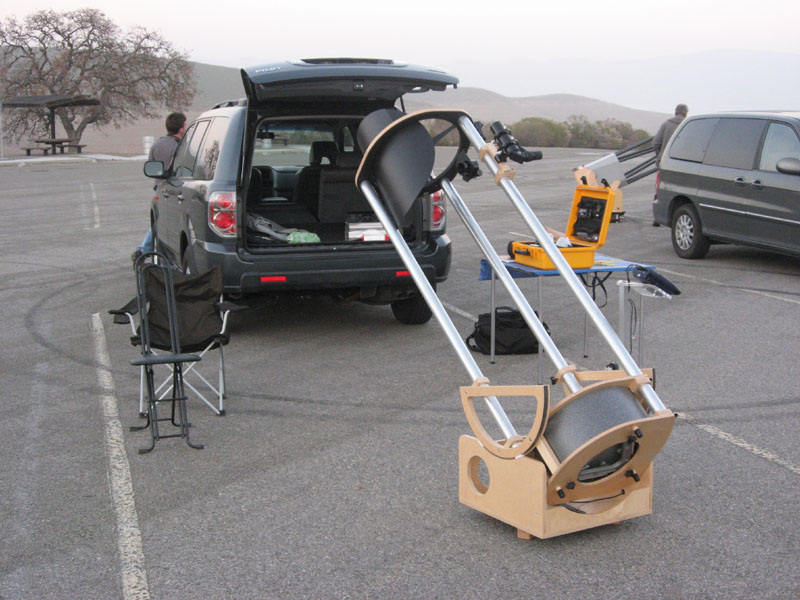
Location: Dinosaur Point [Latitude 37°03'54"N - Longitude 121°10'13"W - Elevation 648ft]
Telescope: Meade Lightbridge 12″ F/5
Eyepieces used:
- Televue Panoptic 27mm (56x - 1.2° TFOV)
- Televue Nagler 16mm (95x - 52′ TFOV)
- Vixen LV9mm (170x - 18′ TFOV)
(All times are PST)
NGC 247 GX Cet 00h47m36.1s -20°42’44″ 9.7 mag 06:40p
Elongated 4×1 N-S, low surface brightness, fairly uniform, only very slightly brighter in the middle.
NGC 157 GX Cet 00h35m14.6s -08°20’48″ 11.0 mag 06:50p
Pretty bright, elongated 2×1 NE-SW, fairly uniform. Faint star nestled inside the halo. Surrounded by two bright stars on a N-S line.
NGC 246 PN Cet 00h47m31.2s -11°49’23″ 10.4 mag 07:00p
Pretty bright, round, with darker areas inside. The E-SE portion is darker. 3 easy stars nestled inside the nebulosity + 1 fainter.
NGC 584 GX Cet 01h31m48.9s -06°49’17″ 11.3 mag 07:10p
Elongated 2×1 E-W, progressively brighter towards the middle, fairly bright overall. Nearby galaxy 5′ E-SE (NGC 586)
NGC 596 GX Cet 01h33m20.0s -06°59’06″ 11.8 mag 07:15p
Fairly bright, round, bright almost stellar core. 15′ W of bright star.
NGC 615 GX Cet 01h35m33.7s -07°17’38″ 12.4 mag 07:20p
Elongated N-S, almost stellar core.
NGC 720 GX Cet 01h53m27.9s -13°41’41″ 11.1 mag 07:27p
Slightly elongated NW-SE, fairly bright, with a bright and almost stellar core.
NGC 908 GX Cet 02h23m30.8s -21°11’38″ 10.8 mag 07:32p
Fairly bright and uniform, gradually brighter towards the center, elongated 3×1 E-W.
NGC 779 GX Cet 02h00m10.7s -05°55’13″ 11.9 mag 07:40p
Fairly bright, elongated 3×1 almost N-S, bright almost stellar core. Eastern side felt darker for some reason. Photos don’t show any dark lane however.
NGC 936 GX Cet 02h28m06.3s -01°06’51″ 11.2 mag 07:45p
Pretty bright, with a bright non stellar core. Looks round. This is supposed to be a barred spiral. I did not however detect any central bar structure. Faint galaxy 10′ E (NGC 941)
NGC 1022 GX Cet 02h39m00.8s -06°38’17″ 12.1 mag 07:52p
Fairly bright, round, somewhat brighter in the middle. My notes mention that the halo did not seem perfectly uniform (?)
NGC 1052 GX Cet 02h41m32.6s -08°12’59″ 11.4 mag 08:00p
Fairly bright, round, somewhat brighter in the middle.
NGC 772 GX Ari 01h59m50.8s +19°03’16″ 10.6 mag 08:30p
Almost round, fairly bright with a bright non stellar core. Did not see any hint of spiral structure.
NGC 1964 GX Lep 05h33m46.4s -21°56’30″ 11.5 mag 08:40p
Slightly elongated SW-NE, fairly bright, almost stellar core. Dim halo. I noted the presence of a faint star in the halo right near the core. I forgot to include its relative position though.
NGC 2215 OC Mon 06h21m17.4s -07°17’16″ 8.6 mag 10:10p
About 30 fairly bright stars scattered within a 10′ roundish area.
NGC 2232 OC Mon 06h27m43.9s -04°45’51″ 4.2 mag 10:20p
Large (50′) cluster of about 20 scattered stars, including 10 Mon.
NGC 2204 OC CMa 06h15m58.8s -18°40’07″ 9.3 mag 11:00p
20+ stars in front of a somewhat milky background. Orange star 10′ to the north.
NGC 2354 OC CMa 07h14m34.4s -25°42’23″ 8.9 mag 11:10p
40+ stars over a milky background. Several dark lanes split the cluster.
NGC 2362 OC CMa 07h19m05.7s -24°58’20″ 3.8 mag 11:15p
Small cluster of about 30 fairly bright stars, centered on an even brighter star surrounded by a darker band.
NGC 2360 OC CMa 07h18m09.8s -15°39’31″ 9.1 mag 11:20p
Large and compressed cluster of stars of comparable brightness.
NGC 2244 OC Mon 06h32m26.1s +04°56’06″ 5.2 mag 11:25p
Very bright and large cluster inside the Rosetta nebula.
NGC 2264 OC Mon 06h41m30.2s +09°53’11″ 4.1 mag 11:35p
The famous Christmas tree cluster. Very beautiful. Did not notice any nebulosity.
